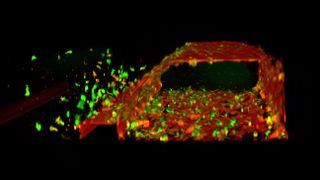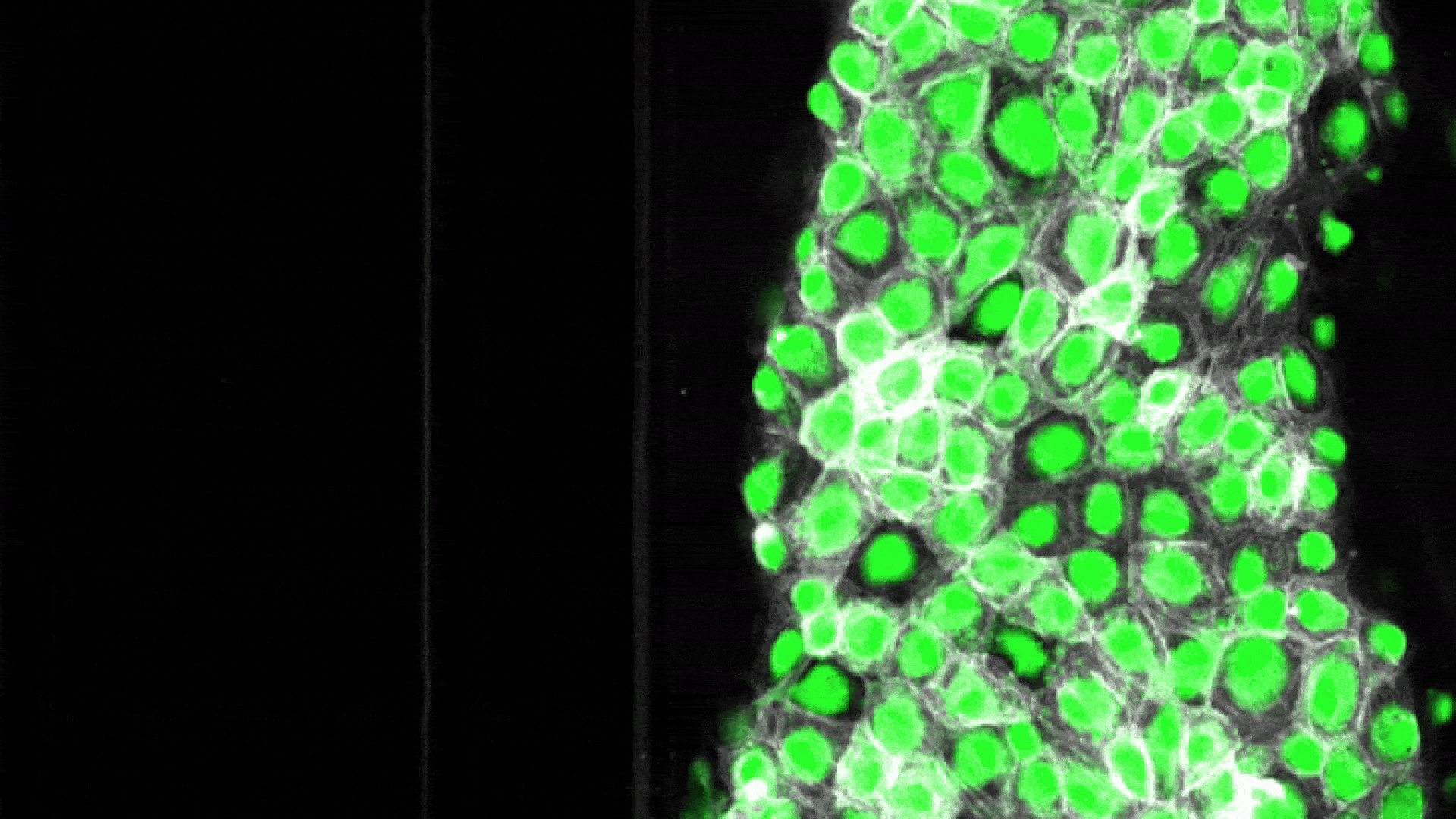Cobra venom kills by collapsing blood vessels, organ-on-a-chip shows
A new 3D model of a human blood vessel made in the lab may help accelerate the development of new antivenoms, researchers say.

Scientists have created a miniature "blood-vessel-on-a-chip" to study how snake venom can cause fatal internal bleeding — and to help develop new antivenoms to stop it.
The new 3D model contains cells that line human blood vessels, known as endothelial cells, as well as the extracellular matrix, or physical framework that supports those cells. The device accurately mimics the shape and cellular makeup of tiny blood vessels in the body and shows how blood flows through them.
Scientists have previously developed similar organ chips to mimic different systems in the body and test new drugs. In this case, researchers used their tiny blood-vessel model to investigate exactly how different types of snake venom damage blood vessels. The team revealed its findings in a study published Tuesday (June 4) in the journal Scientific Reports.
The team used exposed the new chip to venom milked from four species of snakes: Indian cobras (Naja naja), West African carpet vipers (Echis ocellatus), many-banded kraits (Bungarus multicinctus) and Mozambique spitting cobras (Naja mossambica). The snakes belong to the most venomous families of snakes — the vipers and elapids.
The researchers used specialized imaging techniques to peer inside the chips as venom coursed through them. They discovered that some of these venoms can directly injure the membranes of endothelial cells, while others dislodge the cells from their extracellular matrices, prompting blood vessels to collapse.
Related: Slow-motion footage of snake attacks reveals surprise discovery about how they kill
"The model provides accurate insight into how toxins attack blood vessels," Mátyás Bittenbinder, lead study author and a research associate at Vrije University Amsterdam and the Naturalis Biodiversity Center in the Netherlands, said in a statement.
Sign up for the Live Science daily newsletter now
Get the world’s most fascinating discoveries delivered straight to your inbox.
"This knowledge will help us develop better methods to treat snakebites, while also reducing the need to do studies on mice," he said. While mice and other animals share aspects of humans' biology, the blood-vessel-on-a-chip incorporates actual cells from humans and can be controlled in the lab more easily and cheaply.
With their new chip in hand, the team plans to expose the model to more snake venoms in the future.
More than 600 snake species are known to be venomous. Besides attacking the circulatory system, snake venom can seriously harm the body by triggering paralysis that causes a victim to stop breathing and by causing irreversible kidney failure and extensive tissue damage.
Each year, an estimated 1.8 million to 2.7 million people worldwide are bitten by venomous snakes. Of these, between 81,000 and 138,000 die from the effects of the bite, while three times as many people receive permanent disabilities as a result, such as amputations.
The most effective treatment for venomous snake bites is antivenom, which works by bolstering the human body's immune response to venom. Antivenom is typically made by injecting large animals, such as horses or sheep, with a specific venom and then extracting the antibodies that the animals produce in response. These antibodies are then purified and given to humans following a snakebite.
However, antivenoms aren't always effective and can also spark allergic reactions in some people. As such, there is a need for new types of antivenom, and some scientists are working to create a universal antivenom.
The new blood-vessel-on-a-chip could help aid the process of testing new antivenoms, while also reducing scientists' reliance on animal experiments, the research team said.
Ever wonder why some people build muscle more easily than others or why freckles come out in the sun? Send us your questions about how the human body works to community@livescience.com with the subject line "Health Desk Q," and you may see your question answered on the website!
Emily is a health news writer based in London, United Kingdom. She holds a bachelor's degree in biology from Durham University and a master's degree in clinical and therapeutic neuroscience from Oxford University. She has worked in science communication, medical writing and as a local news reporter while undertaking journalism training. In 2018, she was named one of MHP Communications' 30 journalists to watch under 30. (emily.cooke@futurenet.com)
